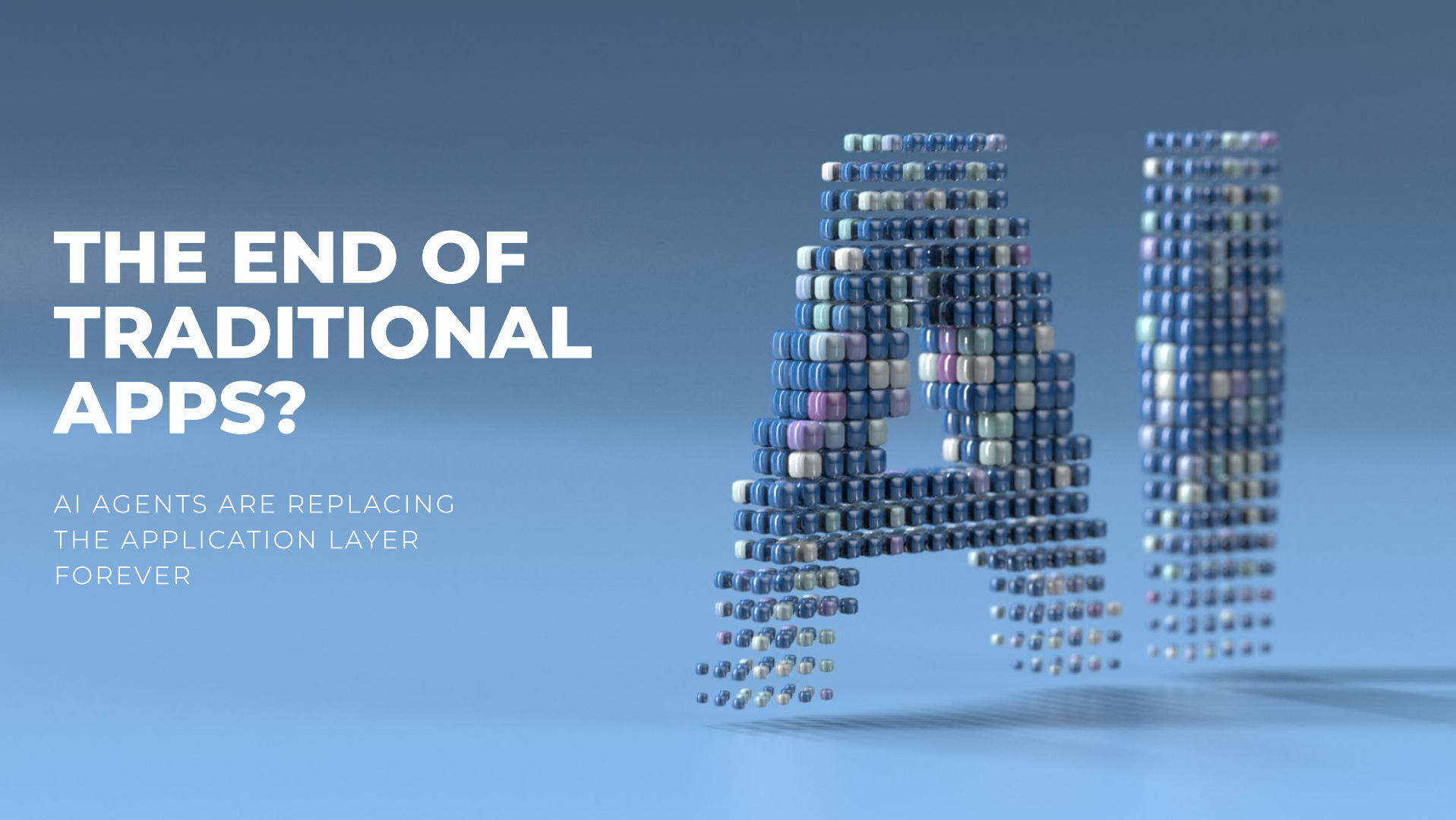How AI Agents Are Replacing the Application Layer Forever
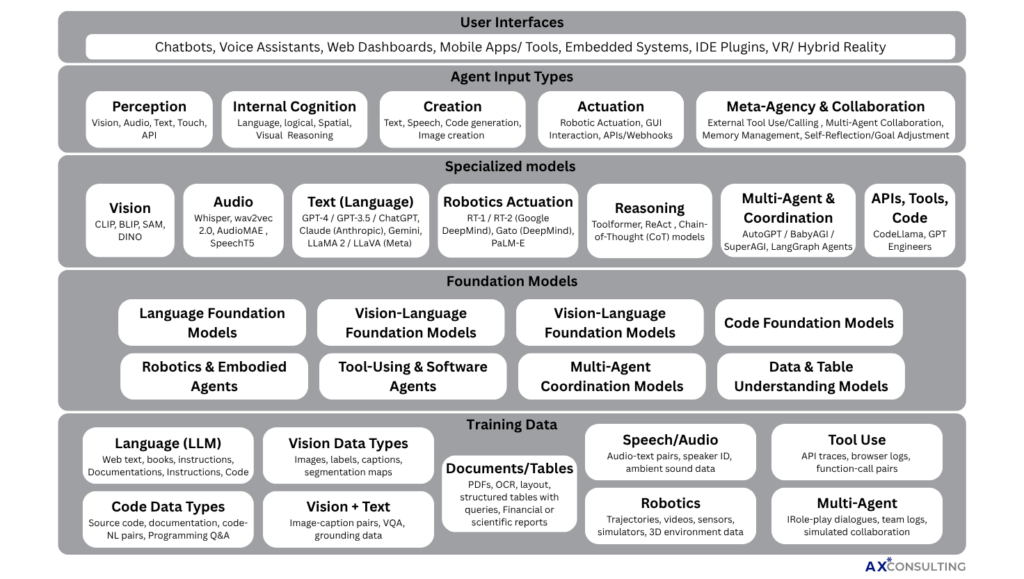
For decades, digital transformation has meant building more apps—each solving a specific need, each adding to the complexity of our digital environments. But a new shift is underway. The rise of intelligent AI agents—powered by large language models (LLMs), retrieval-augmented generation (RAG), and autonomous orchestration—is challenging the very foundation of application architecture.
What if, instead of logging into an app, you could simply ask an agent to get the job done?
The rise of autonomous AI agents is challenging the traditional application layer of software. Instead of static apps with fixed UIs, we’re moving toward dynamic, goal-driven agents that perform tasks conversationally, adaptively, and autonomously. This shift could redefine how we interact with technology—making traditional apps obsolete.
We’re entering an era where AI agents replace the application layer, moving from app-centric workflows to intent-driven interactions. The implications are vast—for users, developers, enterprises, and entire industries like banking and financial services.
What Are AI Agents?
AI agents are autonomous, goal-driven digital entities that perceive, reason, and act on behalf of users. Unlike traditional software which follows hard-coded paths, AI agents are adaptive: they receive input (usually in natural language), retrieve relevant context from data sources, make decisions, and perform actions—often without human intervention.
Modern AI agents combine several building blocks:
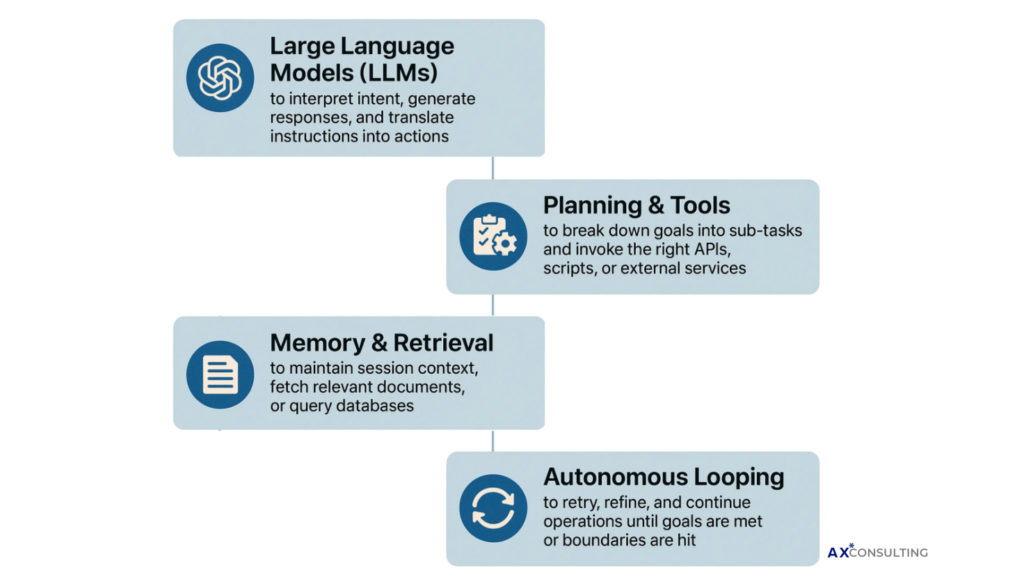
Agents can operate at varying levels—from simple chatbot assistants to fully autonomous business copilots that manage workflows, decisions, and transactions.
Why the Application Layer Is Becoming Obsolete
Traditional apps are built around static interfaces, predefined menus, and user-controlled navigation. They require users to know what feature they need, find it, and operate it. But AI agents invert that model.
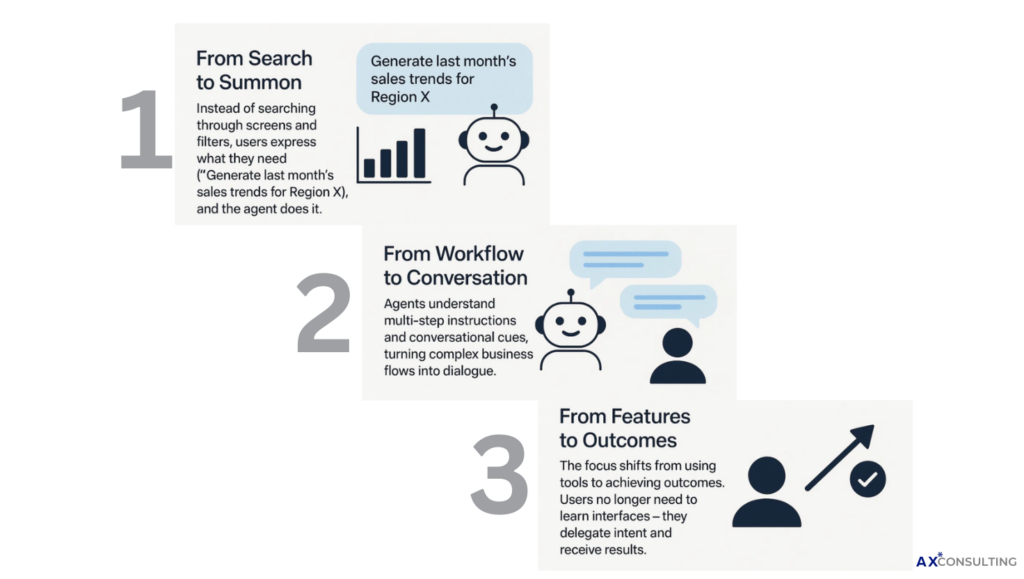
This shift is not just a UI change—it rewrites how software is designed, consumed, and monetized.
How AI Agents Replace Traditional Solutions
AI agents represent a new computing paradigm that eliminates the need to navigate siloed applications. Instead of being app-bound, users interact with one or more agents capable of reasoning and acting across systems.
From App-Centric to Intent-Centric
In a traditional setup:
- Users open a CRM app to log a lead.
- Open an ERP to issue an invoice.
- Open a BI tool to generate insights.
In the agent-driven model:
- A single agent understands the context and performs these tasks in one go—without the user needing to switch platforms.
| Traditional Apps | AI Agent-Driven Interface |
|---|---|
| Fixed UI and workflows | Dynamic, conversation-based interaction |
| Versioned, scheduled updates | Continuous learning and improvement |
| Users navigate apps | Agents navigate systems on user’s behalf |
| Requires training | Natural language interaction |
Real World Examples:
Below is the foundation upon which the post-application world is being built.

Opportunities and Risks
| Opportunities | Risks |
| 1. Productivity: Agents can execute complex tasks faster and with fewer errors. 2. Hyper-Personalization: Agents understand individual user preferences and adapt responses in real-time. 3. Lower Development Overhead: Developers build skills (functions), not full-stack apps, reducing time-to-market. | 1. Control and Explainability: Agents must be transparent and auditable. 2. Security: Autonomous agents interacting with sensitive systems require strong identity, permissioning, and monitoring. 3. Trust and Governance: Who is accountable when an agent makes a wrong decision? |
Preparing for the Agent‑First Future
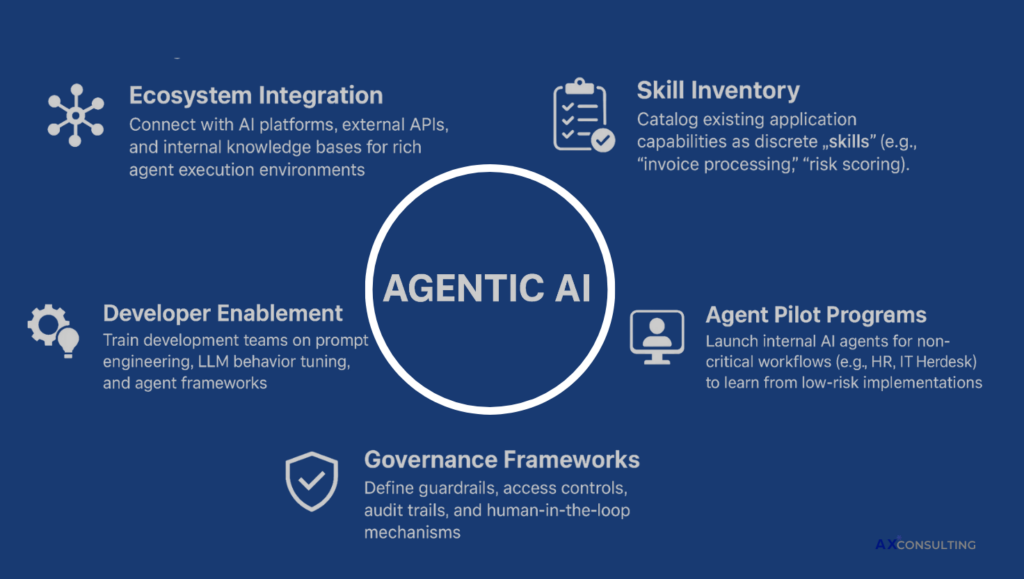
Embracing the Agentic Era with ASTERIQX
The shift from traditional apps to AI agents marks a fundamental transformation in how we design, deploy, and experience technology. At ASTERIQX Consulting, we help organizations navigate this leap by designing secure, scalable AI agent ecosystems—transforming static workflows into intelligent, autonomous solutions. Our upcoming StarAX Agents product line will further accelerate this evolution with pre-built, domain-specific agents that are plug-and-play ready for banking, finance, healthcare, and beyond.
This isn’t just a trend—it’s a paradigm shift. As the application layer gives way to dynamic AI agents, the future belongs to those who lead, not lag.
The future won’t be clicked—it will be conversed, orchestrated, and achieved through agents. Which side of that future will your enterprise stand on?
ASTERIQX is actively designing domain-specific AI agent frameworks to help institutions transition from static apps to autonomous outcomes. Our upcoming StarAX AI Tools & Agents line will bring pre-built, intelligence-driven solutions to sectors like Banks & FIs—designed for rapid deployment in real-world environments.

